References
from Ancient Literature
According to Professor Dileep
Kumar Kanjilal in his book, Vimana in
Ancient India:
In addition to the Vaimanika
Shashtra, the Samarangana Sutradhara and the Yuktikalpataru of Bhoja, there are
about 150 verses of the Rig Veda, Yajurveda and the Atharvaveda, a lot of
literary passages belonging to the Ramayana, the Mahabharata, the Puranas, the
Bhagavata and the Raghuvamsa and some references of the darma
Abhijnanasakuntalam of Kalidasa, the Abimaraka of Bhasa, the Jatalas. the
Avadhana Literature and of the Kathasaritsagara and a number of literary works contained
either references to graphic aerial flight or to the mechanism of the aerial
vehicles used in old ages in India.
In the Ramayana both the words
"Vimana" and "Ratha" have been used:
-
Kamagam ratham asthaya...nadanadipatim
(3. 35. 6-7). He boarded the aerial vehicle with Khara which was decorated
with jewels and the faces of demons and it moved with noise resembling the
sonorous clouds.
-
You may go to your desired place
after enticing Sita and I shall bring her to Lanka by air.. So Ravana and
Maricha boarded the aerial vehicle resembling a palace (Vimana) from that
hermitage.
-
Then the demoness brought the
Puspaka aerial vehicle and placed Sita on it by bringing her from the Ashoka
forest and she was made to see the battle field with Trijata.
-
This aerial vehicle marked with
Swan soared into the sky with loud noise.
Reference to Flying vehicles
as Vimana occur in the Mahabharata in about 41 places of which the air attack of
Salva on Krisna's capital Dwaraka deserve special notice. The Asura king Salva
had an aerial flying machine known as Saubha-pura in which he came to attack
Dwaraka. He began to shower hails, and missiles from the sky. As Krishna
chased him he went near the sea and landed in the high seas. Then he came back
again with his flying machine and gave a tough fight to Krishna staying about
one Krosa (about 4,000 ft) above the ground level. Krishna at last threw a
powerful ground-to-air weapon which hit the plane in the middle and broke it
into pieces. The damaged flying machine fell into the seas. This vivid
description of the air attack occurs in the Bhagavata also. We also come across
the following references to missiles, armaments, sophisticated war-machines and
mechanical contrivances as well as to Vimanas in Mahabharata.
For more on Ramayana, refer to
chapters Glimpses XIX, Hindu
Scriptures, Dwaraka,
War
in Ancient India, Survarnabhumi
and Sacred
Angkor.
The inscriptions of emperor Asoka
are by far the most authentic records in support of the existence of aerial
flying vehicles which are mentioned as Vimana. The existence of aerial chariots
in whatever form it might be was so well-known that it found a place among the
royal edicts of the Emperor Asoka which were executed during his reign from 256
B.C.- 237 B.C.
Vatsyana in his Kama Sutra referred
to mechanical contrivances in their origin among 64 ancilliary Sciences.
The Arthasastra of Kautilya (3rd
century B.C), a treatise mainly dealing with political economy but containing
information on kindred scientific topics refers to a class of mechanic known as
Saubhika..."
***
A discussion regarding the existence
of and the use of flying vehicles in ancient India naturally waits for an
advanced state of knowledge in cosmogony. A close and careful study of the Vedic
literature shows that it was not just a collection of primeval poetry but a
varied literature of a powerful and dynamic society where the people had the
knowledge of cloud and vapor, of the season and of the monsoon, of the different
types of wind, of the expanse of the sky, of the strength of the wind blowing at
high speed and so on. Three types of cloud have been referred to in the Rig Veda
(1.101.4). which also states that smoke and vapor surcharged with water turn
into cloud. Formation of vapor through heat and the subsequent formation of
cloud has been referred to in the Vedas. Indian meteorological concepts thus
date back to the age of the Rig Veda.
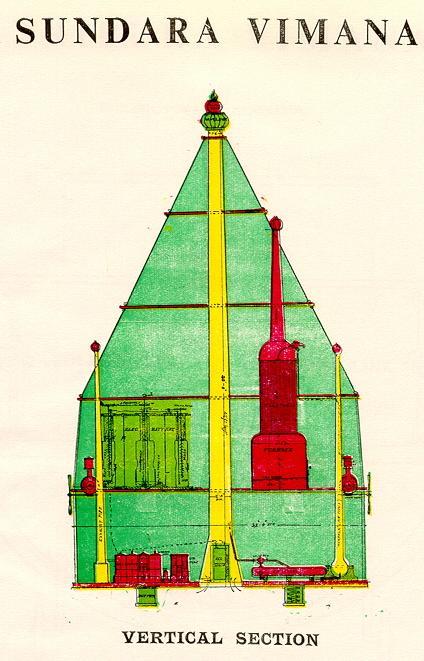
Sundara Vimana
***
Dileep
Kumar Kanjilal concludes that: "With the passage of time and
due to various changes of catastrophes the machines went out of use so that the
secrets of its make-up and flying were equally lost. That the discontinuity of
technical knowledge of a particular science within the known period of history
is not an impossible factor has been shown by the inability to explore the
nature of the rustless iron of the pillar of
Chandraketu now fixed in Delhi. Hiuentzang, the Chinese pilgrim in
the 7th century A.D. referred to 7 story palaces of which no evidence now
remains. Sir P. C. Roy had shown that during the period from 1509 B.C.
up to the
end of the 3rd century B.C.E. methods for the large scale production of metals
like gold, silver, copper, iron, tin, lead and mercury and of alloys like brass,
bronze, and those of gold and silver with baser materials were known. Large
varieties of mineral ores, gems, and precious stones have been described in
detail by Kautilya. Knowledge of the fermentation process also reached a fairly
advanced state. With a highly developed state of civilization flourishing in
art, culture, literature, history, medicine, alchemy, chemistry, physics,
mathematics, astronomy, and astrology, geology, trade, commerce, shipbuilding,
and agriculture it is natural to think that some sort of flying vehicles as
attested by literary references was in all probability known. From the time of
Panini upto the time of Bhoja we come across references to the great
universities of Taxila, Valabhi, Dhar, Ujjain and Visala etc. The annals of
history inform us that the depredations of the foreign tribes began as early as
the 2nd century A.D. From two centuries later came succeeding waves of attacks
of other foreign hordes like the Arabs, Turks and Afghans. All the well known
universities and other centers of learning like the temples, the Viharas and the
Bhandaras containing books and other priceless treasures of the Indian heritage
had to stand the fire and fury of the marauders. In the dark firmament of
devastation and uncertainty a silver lining was, however, seen
in the efforts of King Bhoja in the 12th century, when he tried to compile the
Sanskrit texts. Glimpses of old heritage survived only in the memory
of the people and in stray literary evidences. State patronization for Indian
Hindu cultural enterprises in the Turk-Afghan/Islamic period was a
misnomer."
The original designation of the
flying machine was "Ratha" which gave way for the term "Vimana".
The Samarangana Sutradhara unequivocally suggested that the design of the plane
was imitated to construct palaces. It was built by the Rbhus for the Gods. Gods
as pointed out by Sayana came from remote space in the sky above and the obvious
conclusion is that Gods as newcomers on the earth from outer space brought in
this technology. The texts of the Rig Veda ranging from the 1st-10th Manadal
refers to aerial flying machines as Ratha. In the Yajurveda which is considered
chronologically later than the Rg Veda followed by other Brahmanas, the name
"Vimanas" occurs. These vehicles were multi-shaped. But the triangular
or quadrangular pattern survived owing to their practical utility. Puspaka the
aerial vehicel survived in use because of its practical usefulness. In the Vedic
texts the configuration of the machines has been broadly shown as triangular.
The inside area as it can be gathered from the text was about 9 ft X 9 ft. = 81
sq. ft capable of accommodating 7/8 persons. In a triangular delta wing type
this can be easily be made conical to give it greater feasibility and maneuverability.
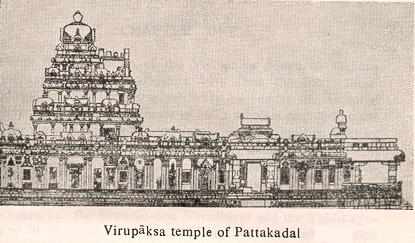
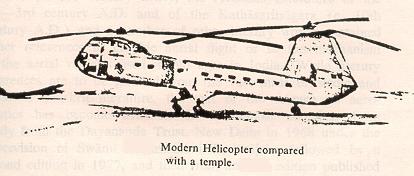
***
The descriptions of the flying aerial cities in the
Mahabharata seem to indicate a higher degree of scientific achievement and
technical skill as the flying cities moved high up above the region of the
clouds and very probably in the exosphere region. We have
earliest temple design in a seal of the Harmika-sira temple built by
King Hubiska at Buddha Gaya of the 1st century B.C.E. which is a rectangular
based conical construction. The Virupaksa Temple of Pattakada, of 740 A.D. has a
long rectangular base developed into a tapering square or hectagonal
construction upwards imitate the Trivistapa type. The overall structural
similarity of the temples with a modern helicopter gives overt cognizance to the Samarangana Sutradhara
that temples were designed after the models of the flying machines. Even the
giant Konaraka temple which resembles the chariot of Surya (Sun God) was of
octagonal pattern on large rectangular base measuring 100 ft X 100 ft. X 100 ft.
"
(source: Vimana in
Ancient India - By Dileep Kumar Kanjilal Sanskrit Pustak
Bhandar Calcutta 1985 p. 11-99). For more information, refer to chapter on Hindu
Culture).
For
more refer to chapters on Sanskrit
and War in Ancient
India. Also Refer to Vymanika
Shashtra - Aeronautical Society of India.
For more on Ramayana, refer to
chapters Glimpses XIX, Hindu
Scriptures, Dwaraka,
War
in Ancient India, Survarnabhumi
and Sacred
Angkor.
Top of Page
Here is a survey of some fascinating articles and quotes:
"One time while King Citaketu was traveling in outer space on a brilliantly effulgent
airplane given to him by Lord Vishnu, he saw Lord Siva..." "The arrows released
by Lord Siva appeared like fiery beams emanating from the sun globe and covered the three
residential airplanes, which could then no longer be seen."
Srimad
Bhagavatam, Sixth Canto, Part 3.
 "The so-called ‘Rama Empire’ of Northern India and
Pakistan developed at least fifteen thousand years ago on the Indian sub-continent and was
a nation of many large, sophisticated cities, many of which are still to be found in the
deserts of Pakistan, northern, and western India. Rama...was ruled by ‘enlightened
Priest-Kings’ who governed the cities.
"The so-called ‘Rama Empire’ of Northern India and
Pakistan developed at least fifteen thousand years ago on the Indian sub-continent and was
a nation of many large, sophisticated cities, many of which are still to be found in the
deserts of Pakistan, northern, and western India. Rama...was ruled by ‘enlightened
Priest-Kings’ who governed the cities.
The seven greatest capital cities of Rama were
known in classical Hindu texts as ‘The Seven Rishi Cities’. According to ancient
Indian texts, the people had flying machines which were called ‘vimanas’. The
ancient Indian epic describes a vimana as a double- deck, circular aircraft with portholes
and a dome, much as we would imagine a flying saucer.
It flew with the "speed of the
wind" and gave forth a ‘melodious sound’. There were at least four
different types of vimanas; some saucer shaped, others like long cylinders (‘cigar
shaped airships’)."
(image
source: Vymaanika
Shaastra Aeronautics of Maharshi Bharadwaaja - By G. R. Josyer).
(source: D. Hatcher Childress, "Ancient Indian Aircraft Technology" In The Anti-Gravity
Handbook).
" An aerial chariot, the Pushpaka, conveys many people
to the capital of Ayodhya. The sky is full of stupendous flying-machines, dark as
night,but picked out by lights with a yellowish glare."
- Mahavira of Bhavabhuti
(A Jain text of the eighth century culled from older
texts and traditions).
"The Vedas, ancient Hindu poems, thought to be the
oldest of all the Indian texts, describe vimanas of various shapes and sizes: the
‘ahnihotra-vimana’ with two engines, the ‘elephant-vimana’ with more
engines, and other types named after the kingfisher, ibis and other animals."
(source: D. Hatcher Childress, "Ancient Indian Aircraft
Technology" In The Anti-Gravity Handbook )
"Now Vata’s chariot’s greatness! Breaking goes it, And Thunderous is its
noise, To heaven it touches, Makes light lurid [a red fiery glare], and whirls dust upon
the earth."
Rig-Veda
(Vata is the Aryan god of wind).
In the Vedic literature of India, there are many descriptions of flying machines that are
generally called vimanas. These fall into two categories: (1) manmade craft that resemble
airplanes and fly with the aid of birdlike wings, and (2) unstreamlined structures that
fly in a mysterious manner and are generally not made by human beings. The machines in
category (1) are described mainly in medieval, secular Sanskrit works dealing with
architecture, automata, military siege engines, and other mechanical contrivances. Those
in category (2) are described in ancient works such as the Rg Veda, the
Mahabharata, the
Ramayana, and the Puranas, and they have many features reminiscent of UFOs."
"There are ancient Indian accounts of manmade wooden vehicles that flew with wings in
the manner of modern airplanes. Although these wooden vehicles were also called
vimanas,
most vimanas were not at all like airplanes. The more typical vimanas had flight
characteristics resembling those reported for UFOs, and the being associated with them
were said to possess powers similar to those presently ascribed to UFO entities. An
interesting example of a vimana is the flying machine which Salva, an ancient Indian king,
acquired from Maya Danava, an inhabitant of a planetary system called Taltala."
Richard L. Thompson, Alien Identities
"The cruel Salva had come mounted on the Saubha chariot that can go anywhere, and
from it he killed many valiant Vrishni youths and evilly devastated all the city
parks."
The Mahabharata
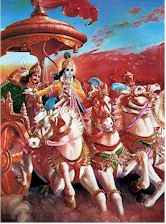 There is this account by the hero Krishna that is
suggestive of more modern weapons. As he takes to the skies in pursuit of Salva: "His
Saubha clung to the sky at a league’s length...He threw at me rockets, missiles,
spears, spikes, battle-axes, three-bladed javelins, flame-throwers, without pausing....The
sky...seemed to hold a hundred suns, a hundred moons...and a hundred myriad stars. Neither
day nor night could be made out, or the points of compass."
There is this account by the hero Krishna that is
suggestive of more modern weapons. As he takes to the skies in pursuit of Salva: "His
Saubha clung to the sky at a league’s length...He threw at me rockets, missiles,
spears, spikes, battle-axes, three-bladed javelins, flame-throwers, without pausing....The
sky...seemed to hold a hundred suns, a hundred moons...and a hundred myriad stars. Neither
day nor night could be made out, or the points of compass."
"The
airplane occupied by Salva was very mysterious. It was so extraordinary that sometimes
many airplanes would appear to be in the sky, and sometimes there were apparently none.
Sometimes the plane was visible and sometimes not visible, and the warriors of the Yadu
dynasty were puzzled about the whereabouts of the peculiar airplane. Sometimes they would
see the airplane on the ground, sometimes flying in the sky, sometimes resting on the peak
of a hill and sometimes floating on the water. The wonderful airplane flew in the sky like
a whirling firebrand - it was not steady even for a moment."
Bhaktivedanta, Swami Prabhupada, Krsna
(Artwork
courtesy of The Bhaktivedanta Book Trust International, Inc. www.krishna.com).
Atomic
devastation, Indian style
Quotes
from The Mahabharata
“Various
omens appeared among the gods – winds blew, meteors fell in
thousands, thunder rolled through a cloudless sky.”
“There
he saw a wheel with a rim as sharp as a razor whirling around the
soma…Then taking the soma, he broke the whirling machine..”
“Drona
called Arjuna and
said…”Accept from this irresistible weapon called Brahmastra.
But you must promise never to use it against a human foe, for if
you did it might destroy the world. If any foe who is not a human
attacks you, you may use it against him in battle..”
“I
shall fight you with a celestial weapon given to me by Drona.
He then hurled the blazing weapon…”
“At
last they came to blows, and seizing their maces struck each
other…they fell like falling suns.”
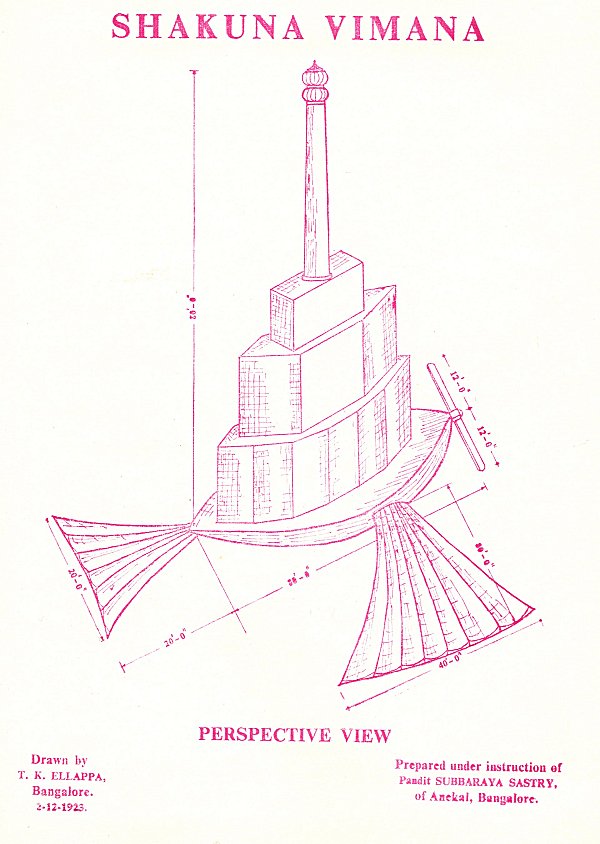
Until the bombing of
Hiroshima
and
Nagasaki
, modern mankind could not imagine any weapon as horrible and
devastating as those described in the ancient Indian texts.
It seems absolutely incredible that there was an atomic war
approximately ten thousand years ago. And yet, of what else could the
Mahabharata be speaking?
Yet they very accurately
described the effects of an atomic explosion. Radioactive poisoning will make
hair and nails fall out.
***
These
verses from the ancient Mahabharat:
,,,it
was a single projectile
Charged with all the power of the Universe.
An incandescent column of smoke and flame
As bright as the thousand suns
Rose in all its splendor…
…it was an unknown weapon,
An iron thunderbolt,
A gigantic messenger of death,
Which reduced to ashes
The entire race of the
Vrishnis and the Andhakas.
..The corpses were so burned
As to be unrecognizable.
The hair and nails fell out;
Pottery broke without apparent cause,
And the birds turned white…
…After a few hours
All foodstuffs were infected…
…to escape from this fire
The soldiers threw themselves in streams
To wash themselves and their equipment..”
In
the way we traditionally view ancient history, it seems absolutely
incredible that there was an atomic war approximately ten thousand
years ago. And yet, of what else could the Mahabharata be
speaking? Until the bombing of
Hiroshima
and
Nagasaki
, modern mankind could not imagine any weapon as horrible and
devastating as those described in the ancient Indian texts. Yet
they very accurately described the effects of an atomic explosion.
Radioactive poisoning will make hair and nails fall out.
Immersing one’s self in water is the only respite, though not a
cure.